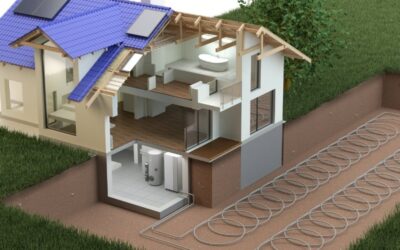Originally published in February 2017, updated in March 2020.
The tightly-sealed buildings in Okeana and Harrison, Ohio, and Lawrenceburg, Indiana keep energy costs in check. The downside is that air-tight buildings suffer from poor indoor air quality. The upside is that you can do something about it. Here are four ways to breathe easier with cleaner indoor air:
Increase Ventilation
A whole-house energy recovery ventilator can deliver clean air to tightly-sealed indoor spaces while reducing energy losses. The ventilator is attached to your forced-air HVAC; fans push stale air out and pull fresh air in.
Install an Air Purifier
Air purifiers quietly but powerfully zap airborne impurities with UV germicidal lamps. They also increase HVAC efficiency and extend the lifespan of your system by keeping equipment clean. An air purifier will neutralize most indoor pollutants like dust mites, mold, mildew, bacteria, dander, viruses, pollen, fungi, tobacco smoke and other allergens.
Trane’s CleanEffects™ Air Cleaner tops the list of effective air cleaners. It uses incredible technology removes up to 99.98% or airborne particles including, biologic spores, bacteria, viruses, and other pollutants that can damage your health. Installed in-line with your existing heating and cooling system, you and your family will be breathing healthy and clean air again with a CleanEffects™ Air Cleaner.
Install an Air Cleaner
Air cleaners pass indoor air through a built-in filter that traps airborne contaminants. The air cleaner is added to your forced-air HVAC so that air entering your ductwork is first filtered and cleaned. Like air purifiers, air cleaners keep your HVAC clean, thereby increasing efficiency and extending the lifespan of your equipment.
Schedule a Ductwork Inspection
Over time, ductwork can become clogged with dirt, debris and other impurities that blow into your home whenever the HVAC turns on. Having your ductwork inspected every several years can reveal the presence of contaminants so your HVAC technician can clear them away. An added bonus of ductwork inspection is that your technician can seal any cracks and leaks that are overworking your equipment and driving up energy costs by allowing cooled and heated air to escape.
To learn more about how you can improve indoor air quality in your Ohio, Indiana or Kentucky home, visit Western Hills Heating and Air Conditioning, Inc. or give us a call.




